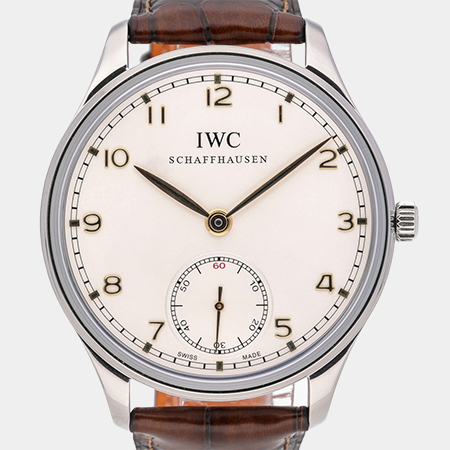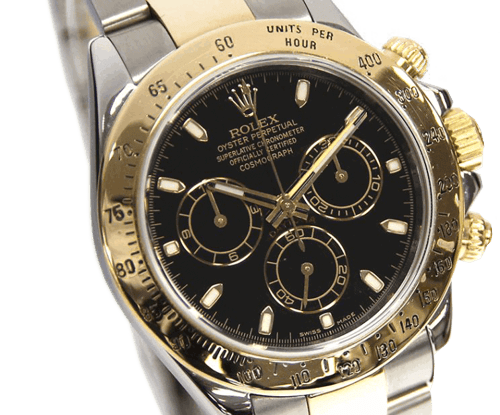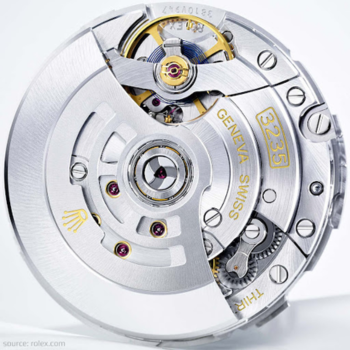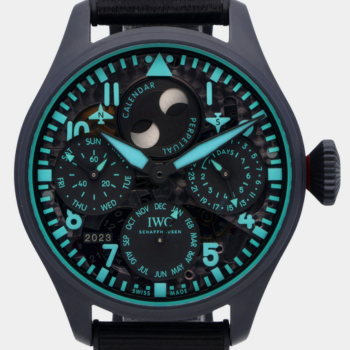When it comes to luxury watches, few names carry the prestige, heritage, and recognition of IWC Schaffhausen and Rolex. Both brands have captivated collectors, enthusiasts, and everyday wearers alike, yet they offer very different philosophies and appeal. Whether you're new to watches or deciding between an IWC and a Rolex for your next purchase, understanding what sets them apart can help you make an informed decision. In this blog, we’ll explore the key differences between IWC and Rolex, from history and craftsmanship to innovation and market appeal.

Rolex was founded in 1905 by Hans Wilsdorf in London, later relocating to Geneva in 1919. From the outset, Rolex focused on precision, durability, and reliability - qualities that would define the brand. Rolex was behind many important industry milestones: the first wristwatch to receive a chronometer certification, the first waterproof wristwatch (the Oyster), and the first watch to display two time zones at once (GMT-Master).
IWC Schaffhausen, on the other hand, was established earlier, in 1868, by American watchmaker Florentine Ariosto Jones in Switzerland. His vision was to combine Swiss craftsmanship with modern American manufacturing methods. Located in Schaffhausen, IWC is known for its engineering-driven, design-forward watches. The brand has long emphasised precision mechanics, legibility, and timeless form - often catering to pilots, engineers, and adventurers.
While Rolex is known for its universal appeal and consistent design, IWC is admired for its technical range and Germanic flair.
Rolex watches are famously conservative in design. Their models, such as the Submariner, Datejust, Daytona, and GMT-Master II, have remained visually consistent for decades. This makes them instantly recognisable and helps retain their value over time. Rolex designs are robust, versatile, and suited to both formal and casual wear.
IWC, in contrast, offers a broader and more varied design catalogue. Collections like the Big Pilot, Portugieser, Ingenieur, and Aquatimer each have unique visual identities. For instance, the Big Pilot is famous for its oversized crown and clean instrument dial, while the Portugieser is elegant and dressy with minimalist complications and large cases. IWC’s designs range from tool-like to refined, appealing to those who appreciate variety and bold character.


Rolex is entirely vertically integrated—it manufactures nearly every component in-house, including cases, dials, bracelets, and even its own gold. Rolex movements are known for reliability and durability rather than exotic complications. Their calibres, such as the 3235 and 4131, offer impressive power reserves, anti-magnetic properties, and chronometer precision. Rolex watches are COSC-certified and undergo additional in-house tests to earn the “Superlative Chronometer” designation.
IWC, while also producing many of its own movements, takes a different approach. IWC watches often feature complications like perpetual calendars, tourbillons, and flyback chronographs, especially in their higher-end models. The in-house 52000 and 69000 series calibres offer solid engineering and long power reserves. IWC doesn’t emphasise chronometer certification as much as Rolex, but their movements are meticulously finished and respected by enthusiasts.
So while Rolex leads in precision and robustness, IWC pushes the envelope in terms of engineering artistry and complexity.
Rolex prides itself on the materials it uses. From its proprietary Oystersteel to its in-house foundry for gold and platinum alloys, Rolex goes to great lengths to ensure consistency and excellence. The Cerachrom ceramic bezels, Parachrom hairsprings, and solid-link bracelets are all part of Rolex’s pursuit of watchmaking perfection. Everything is over-engineered to last. The brand’s commitment to durability is evident in its rigorous testing protocols, ensuring that each component not only performs flawlessly under everyday wear but also withstands extreme conditions.
IWC focuses more on aesthetic detail and technical finishes. The brand is known for beautiful sunburst dials, sapphire crystal display backs, and elaborate case shapes. IWC also offers exotic materials such as bronze, ceramic, and titanium - especially in its Pilot and Top Gun collections. The overall craftsmanship leans toward artful presentation and mechanical innovation. Beyond the materials themselves, IWC invests heavily in finishing techniques that enhance both beauty and performance, such as meticulous polishing, brushing, and skeletonisation of movement components.

Rolex is arguably the most recognisable luxury watch brand in the world. It’s a symbol of success and achievement, worn by everyone from athletes and CEOs to world leaders. This broad appeal, combined with limited production and high demand, creates an enviable secondary market. Rolex watches are often seen as investment pieces, retaining or appreciating in value over time.
IWC occupies a more niche, intellectual space in the market. It’s highly respected among watch collectors and those who appreciate horological history and mechanical beauty. IWC doesn’t have the universal name recognition of Rolex, but it offers deeper cuts and richer stories for those "in the know." You’re less likely to see someone else wearing the same IWC watch, which adds to the exclusivity.
Both brands are priced in the luxury segment, but Rolex generally holds higher resale value. Entry-level Rolex models like the Oyster Perpetual or Datejust begin around £5,000 to £7,000, while sought-after sports models like the Submariner or Daytona can command retail prices above £10,000 - and sometimes double that on the secondary market.
IWC watches vary more widely in price depending on the complication and collection. Entry-level models like the Pilot’s Watch Mark XX or Portofino Automatic start at around £4,500 to £6,000. More complicated models like the Portugieser Chronograph or Big Pilot range from £7,000 to over £15,000. While IWC watches can retain value, they generally depreciate more than Rolex on the second-hand market.

Choose Rolex if you:
There’s no definitive answer to which brand is “better” - it all comes down to personal preference. Rolex is consistent, instantly recognisable, and backed by a global reputation. IWC offers diversity, technical intrigue, and a quieter kind of luxury. Think of Rolex as the reliable, well-dressed executive and IWC as the innovative engineer with a creative edge.
If you're lucky enough to own pieces from both brands, you’ll find they complement each other beautifully. In the end, whether you're drawn to the refined instrumentality of IWC or the understated excellence of Rolex, you're choosing a timepiece built on over a century of innovation and craftsmanship.
Browse our carefully curated collection below to find the perfect IWC or Rolex. We stock all major luxury brands, so you're sure to discover a piece that fits your style. And if you don’t see exactly what you’re after, our expert team specialises in sourcing timepieces to match your needs.
Please get in touch using the form below, and our attentive team will reach out to discuss your upcoming watch purchase. Feel free to visit our luxury showroom to view your desired timepiece up close.